More than Just a Horse Race
When I mentioned that I wanted to write an article on the Palio in Siena, everyone told me that I had to go there during the four days of the Palio festival to truly understand what the Palio meant to the Sienese people. To experience the atmosphere, the spirit of the community and to immerse myself in the events and rituals that lead up to what is probably one of Italy’s oldest and most famous horse races.
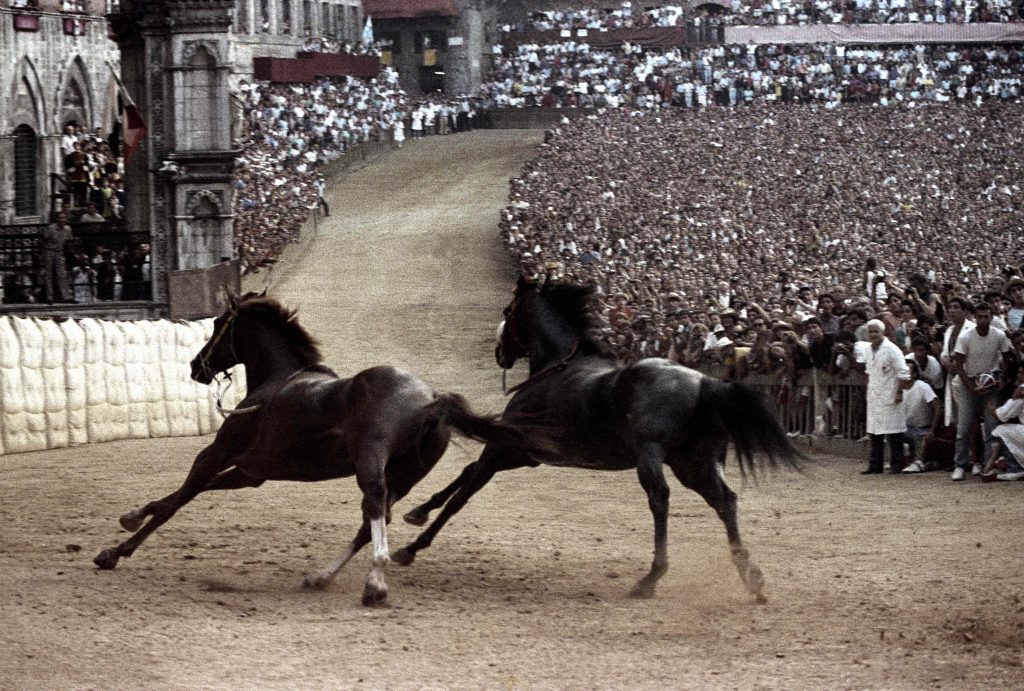
The Palio di Siena, known quite simply to the locals as ‘Il Palio’ is a horse race that is held twice a year,on the 2nd of July and 16 August, in Siena, Italy. Ten horses and their jockeys ride bareback around the Piazza del Campo, each representing one of ten of the seventeen contrade, or city districts. The Palio held on the 2nd of July is named the Palio di Provenzano, in honour of the Madonna of Provenzano, a Marian devotion particular to Siena, while the Palio held on the 16th of August is named the Palio dell’Assunta, in honour of the Assumption of Mary.
The Palio di Siena is more than ‘just a horse race’. It is the culmination of ongoing rivalry and competition between the contrade and something that the Sienese work on all year round.
The field consists of ten horses, so not all seventeen contrade can take part in the Palio on any occasion. The seven contrade that did not take part in that month of the previous year are automatically included; three more are chosen by draw twice a year, in the last days of May and at the beginning of July.
Coming from Melbourne, Australia, famous for The Melbourne Cup, a local horse race quoted as being ‘The Race that Stops a Nation’ I felt that I had some idea of what a horse race could do to a population. But one thing that we don’t have in Melbourne are the contrade and the eternal rivalry between the districts of the city. You don’t choose which contrada you want to support. It’s not like choosing a football team, it’s more like your family – you are born into your contrada and you will live each day of your life with that contrada until you die.
Preparations for the next Palio begin as soon as the last Palio has finished as funds must be raised to support the next Palio campaign. Trainers, horses, jockeys must all be paid for and everyone of course, wants the best of each.
Il Palio è tre minuti con il cuore in gola,
quattro giorni senza fiato,
una vita da respirare a pieni polmoni.
The Palio is three minutes with your heart in your throat,
Four days of feeling that you are out of breath.
and a lifetime living it with every breath you take.
The lead-up and the day of the race are lived with passion and pride. Formal and informal rituals take place, with each contrada fine-tuning their strategy of horsemanship, alliances and animosities. There are the final clandestine meetings among the heads of the contrade and then between them and the jockeys.
The Drappelone – banner or Palio also known by the locals as il cencio (rag) is the banner of painted silk awarded to the winner of the race. It is hand-painted by a different artist for each race. A local artist usually paints the palio for the July race while a famous artist will paint the palio for the August race. Both banners must respect a criteria with the design and follow a precise iconography that inclues some sacred symbols. It must present the insignia of the city and the symbols of the ten contradas participating in the race. The Palio is first presented at a press conference in the courtyard of the Podestà of the City Hall. It is held vertically on a black and white pole and topped by a silver plate, with two black and white plumes draped down the side. The Palio remains the property of the contrada but the silver plate is returned to the city of Siena before the races of the followingyear, after the date and the winning contrada is engraved on it’s back. There is one silver plate for July and a separate one for the August race.
A week before the Palio, the track is laid with the signature mustard coloured earth that transforms the medieval piazza into a racetrack and arena with seats and stands for the spectators. The dirt is a special formula that is re-used each year and conserved nearby the rest of the year. Mattresses are placed on the walls at one of the two most dangerous curves, San Martino to ‘cushion’ any falls by horse and or riders but I think I would prefer a full body air-bag!
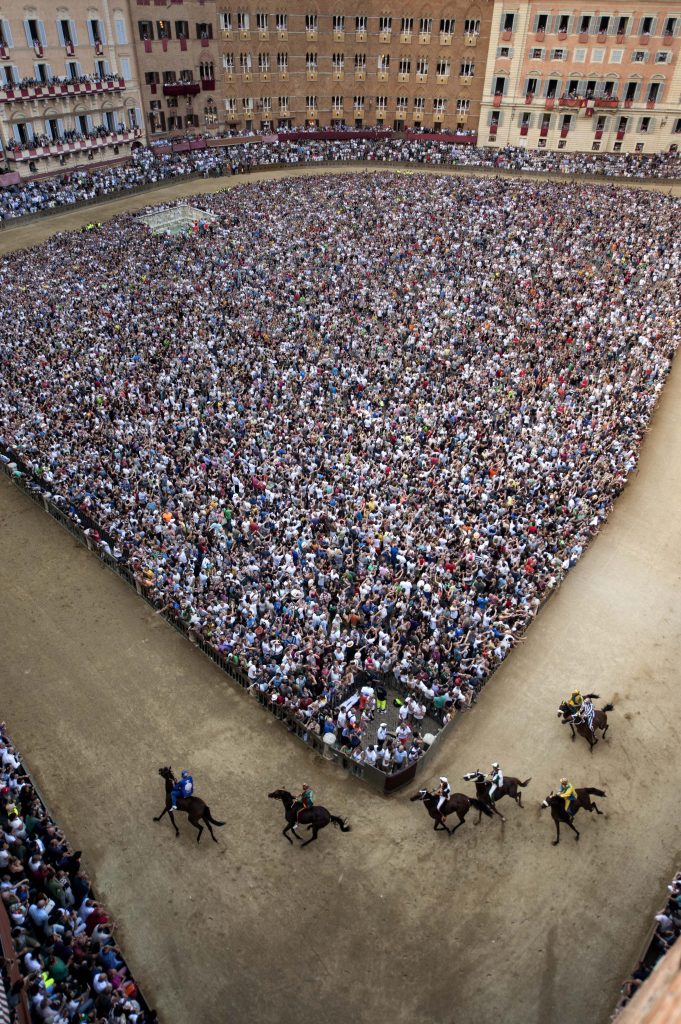
Three days before the race, the horses are selected. Early in the morning of June 29th and August 13th, around thirty horses are brought to the Piazza del Campo to be examined by the vets and presented to the Magistrati or head of each contrada who arein charge of their Palio preparations. The Tratta or trials begin at 9:00am where small groups of horses run three laps around the Campo in the presence of the Mayor, while being scrutinized by the captains. The aim is to select evenly matched horses with a preference for strong and fast horses on the hard ground but also not too exciteable. They also look for horses that are good at turning right which is unusual for a race horse.
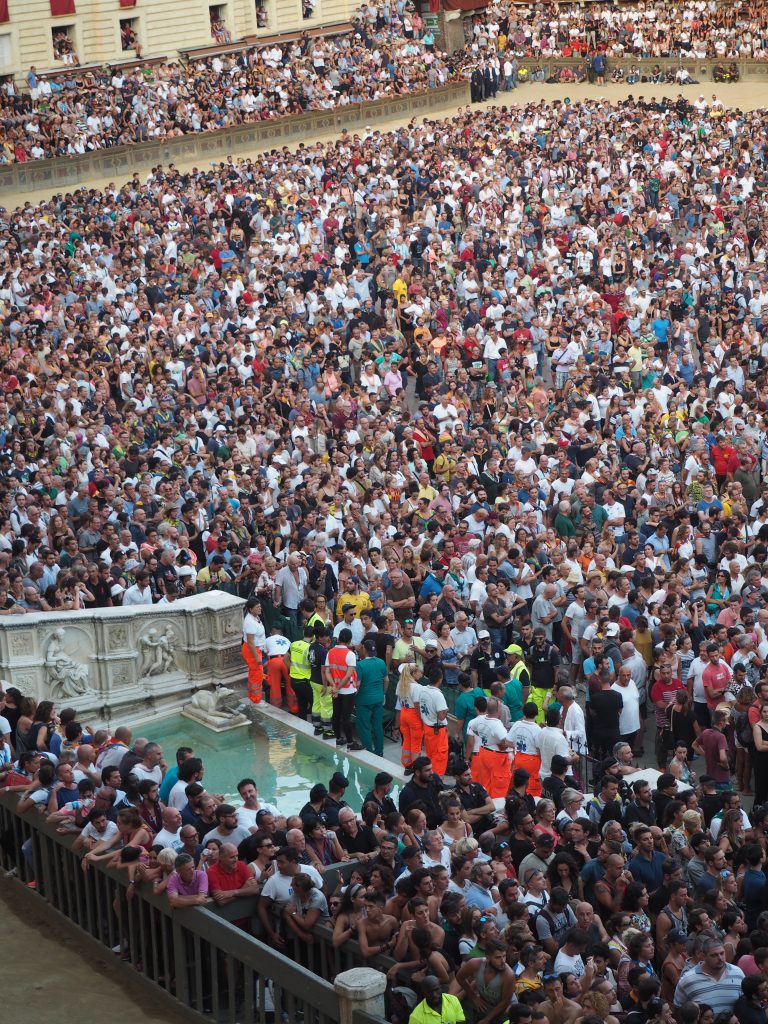
At midday, the Mayor and officials of Siena sit around a table on a stage in the piazza for the Assegnazione. The assignment of each horse is one of the most important moments in the four days of the Palio, an event in itself. Everyone gathers in the Piazza del Campo and holds their breath while the Mayor first pulls out the name of the horse from one box followed by the name of Contrada assigned to it. As opposed to the jockey who has been carefully selected by each contrada but who can also be changed at any time up until the morning of the race, the horse is permanent and cannot be substituted. Each contrada and more importantly the jockey will only have a few days to get to know his horse before the big race.
After each horse is assigned, there is either a large cry of jubilation or a more subdued reaction from the contrada as there are obviously favourite horses that everyone hopes to get. The ‘Barbaresco or Groom’, another key figure of the Palio then moves in to escort the horse together with the Contrada to their stable where he will be responsible for the daily care of the horse up until the race on Sunday. The groom commands huge respect from the contrada and the horse will be treated like a god as he may well bring home the honour of a Palio win!
It is from this moment that the strategies really come into effect. If the contrada has a non-favoured horse, then they will succumb to the fact that they probably won’t win but it will then become important that their rival contrada does not win either. They say that to come second in a Palio is worse than coming last. Equally shaming is if you lose on a favourite horse.
In the evening of the selection and allocation of the horses to the contrada, the first trial race is run. Six trial races are run in total to acquaint the horses with the Palio procedures and noise, and build suspense ahead of the main race. The last trial race is held on the morning before the Palio. Corruption and bribery are commonplace, prompting the residents of each contrada, known as contradaioli, to keep a close watch on their stable and especially their rider as it is the fantino or jockey who really commands the race. As most of the jockeys come from Sardegna (where bareback racing is a common sport) they usually do not have an allegiance or loyalty to any one Contrada. The jockeys will change contradas if a higher bid is offered and are also known to bribe the other jockeys to give them any advantage during the race.
The night before the race, there is a special dinner held in each participating contrada. There is much singing of traditional songs as hundreds of contradaioli come together. The captain raises a toast to the jockey then after the dinner, he meets with the other contrada captains to agree the final ‘partiti’, financial agreements over who will support and who will attack who during the Palio race. With the exception of their main rival, agreements are made with as many contrade as possible.
The race is held in the evening but the day starts early. At 7:30am on the day of each Palio the Archbishop celebrates a short mass for the jockeys called ‘La messa del Fantino’. This is then followed by the final trial in the Piazza called the ‘provaccia’. After this each captain takes their chosen jockey to the city hall to present their name to the mayor and to receive the contrada silks that the jockey will wear during the Palio. Up until this moment no jockey assignment is final.
At around 2:00pm, each horse is brought into the church of his contrada for a special benedizione or blessing from the priest where he says,“Vai e TornaVincitore” – “Go and Return Victorious” It is quite a sight to see a horse inside a church but also to see a priest with the contrada scarf wrapped around his shoulders over his robes.
Once everyone fills the space in the center of the piazza, the gates are closed so they must stay there until the race is over. This year numbers were limited so the piazza didn’t seem as packed full as previous years. Before the race, the Corteo Storico (historical parade) takes place. Over seven hundred people in traditional medieval dress march from the Duomo to the Campo – flag throwers from each contrada walk alongside contrada leaders and jockeys. Also in the parade are representatives of the contrade who are not participating in the race. Sienese government officials, policeman, representatives of towns and villages owing allegiance to Siena and representatives of the main guilds of Siena are also in the large group. The Corteo Storico finishes in the campo and finally it is time for the Palio.
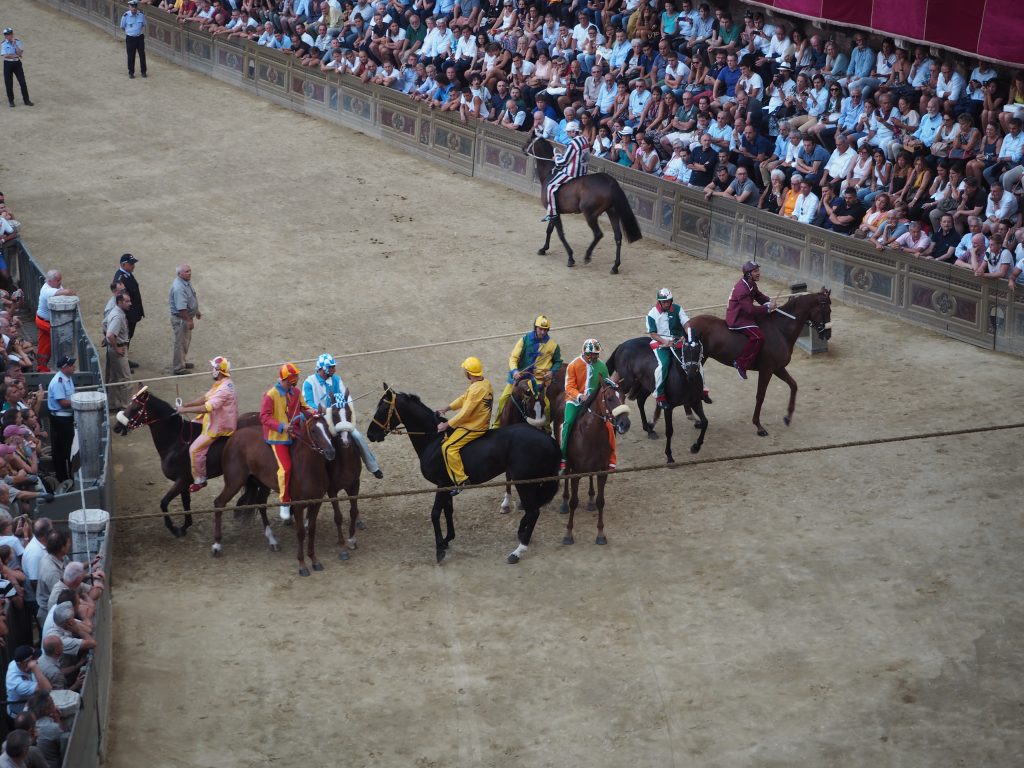
The jockeys mount their horses in the ‘entrone’ or inner courtyard of the Palazzo Pubblico. As they pass into the Campo each is handed a ‘nerbo’ by a police guard – this is the whip the jockeys use for the race only (not the trials). They also use the whip to beat other jockeys and horses during the Palio as they attempt any means possible to remove the rivals from the race. The nerbo is made from a dried, stretched phallus of an unweaned calf, and is about two and half feet long.
The jockeys move towards the ‘canapo’ – the starting ropes but they still don’t know what the starting line-up will be. This is decided moments before the race. Painted balls representing each contrada are randomly drawn to decide the order of the line-up with the first contrada having the best position on the inside of the track. The order of the balls is then passed by a policeman to the ‘mossiere’ or starter, a key figure who not only calls the jockeys to the starting ropes but has a neutral interest in the race. He has also been approved by each Contrada leader. There is a hushed silence in the piazza as he calls the horses to take their position one by one, leaving the tenth one, the rincorsa, to run in from behind. This is the worst position is to be in. The rincorsa waits behind the other horses until the right moment when he runs forward which is the signal of the beginning of the race to everyone else. The only advantage to being in this position is that the rincorsa has major bargaining power with the other jockeys as he can decide to start the race when his enemy is in a bad position. He can also be bribed to follow another jockeys signal for when to run forward. As the line-up is decided at the very last minute, the ‘partiti’ are commonly modified in the last second negotiations by the jockeys and you will see them talking secretly to each other as they jostle in the starting line-up refining agreements or creating new ones based on their position.
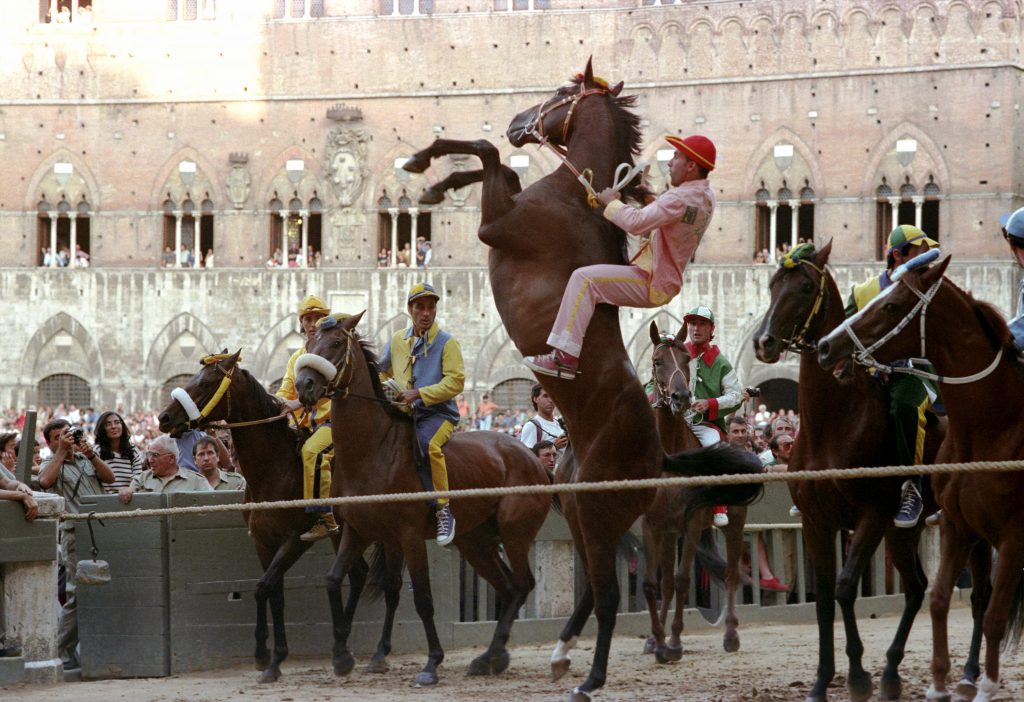
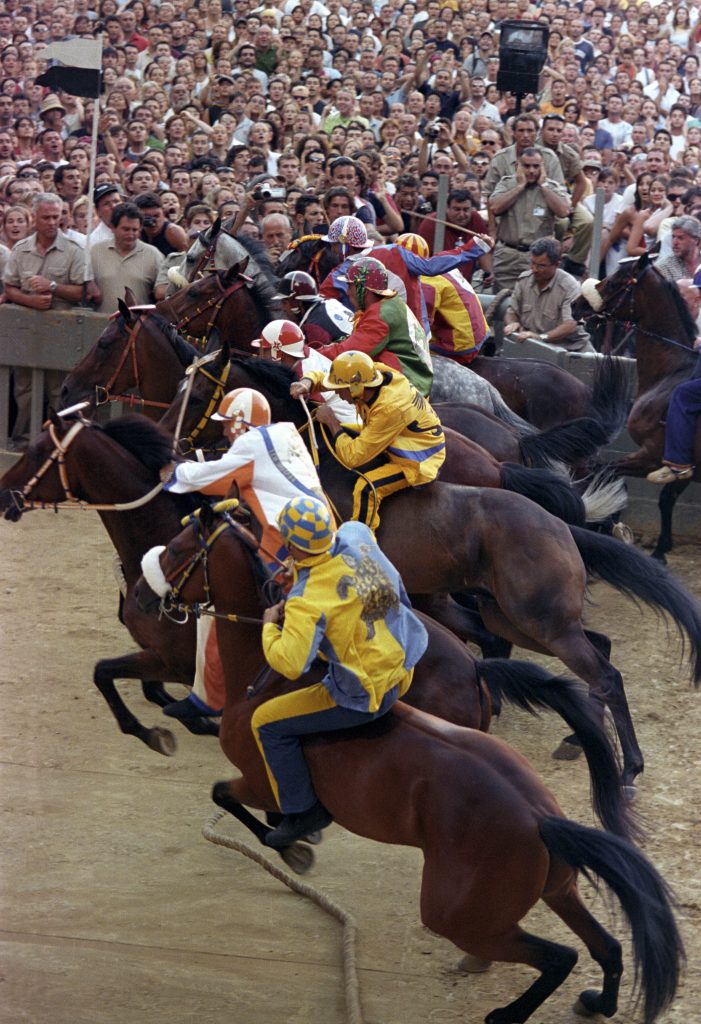
It can take a few hours and attempts to get all the horses lined up suitably for the Palio to start. This period lasts much longer than the actual Palio and can be vitally important in determining the winner. There are basically no rules in the Palio. Jockeys are free to hit the other jockeys and their horses as they try to stop their rival from getting n front of them. The only rule of the Palio is that a jockey may not grab the reins of another’s horse. As long as the horse is still wearing their bridle when they cross the finish line they are the victor – regardless of whether the jockey is still on the horse! The Palio officially starts when the rincorsa runs in from behind and the canapo is dropped. A loud cannon shot will indicate whether the partenza is ‘buona’ and the race can continue or if they must have a re-start.
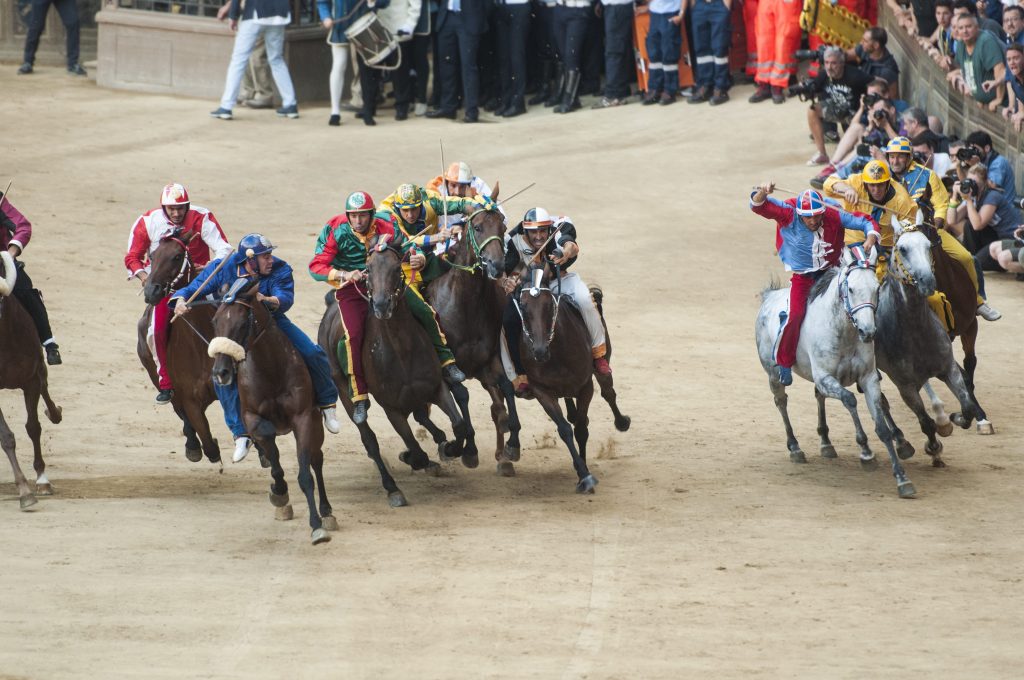
As they race three circuits of the track, the jockey must stop his rival contrada from winning, honor any agreements he is involved in and must avoid the shame of coming second. If his contrada think he is not trying to win they will be exceptionally upset with him. All of this while trying to manage a galloping bareback horse around a cantored track with two tight and dangerous corners. The Palio itself lasts for less than 90 seconds after a year of preparation and emotion comes to a head.
The winning horse and jockey are immediately swarmed by the ecstatic contradaioli and the jockey is carried off on the shoulders of the singing crowd. The the actual ‘Palio’ or banner also known as the drappelone is handed down to the cheering crowd and carried to the church or cathedral.
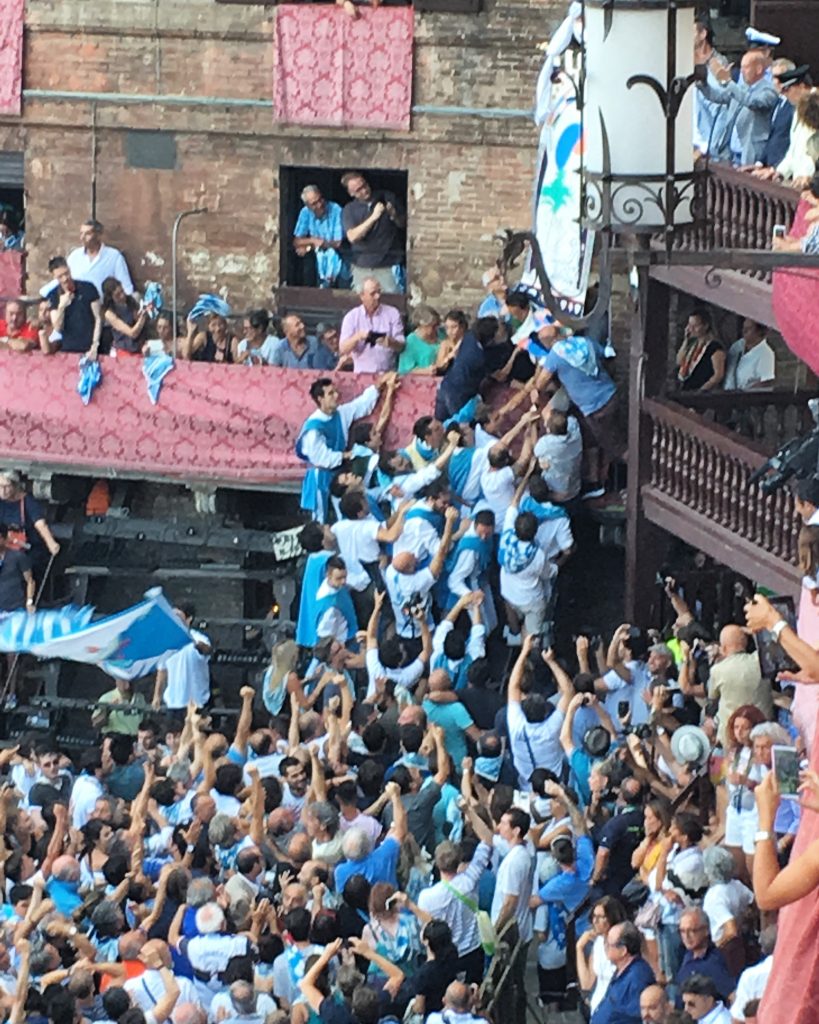
2017 Winner, the Onda Contrada climbing up to claim the Drappelone / Palio.
During the year the Palio banner will be taken out occasionally in a procession around Siena to remind the others of who won.
The evening of the race the jockey and the horse join the contrada for the victory banquet. There are specific celebratory dinners held over the next few months and celebrations by the winning contrada will carry on for up to six months with the last official celebration taking place in January of the following year.
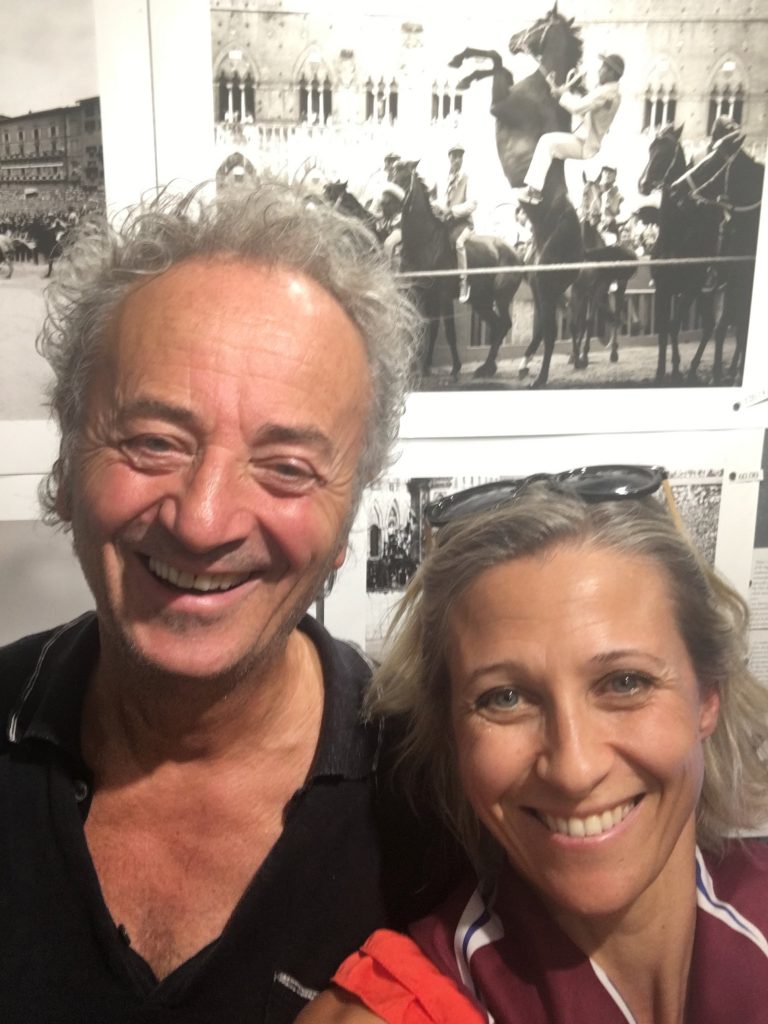
Photographer Luciano Valentini and me. 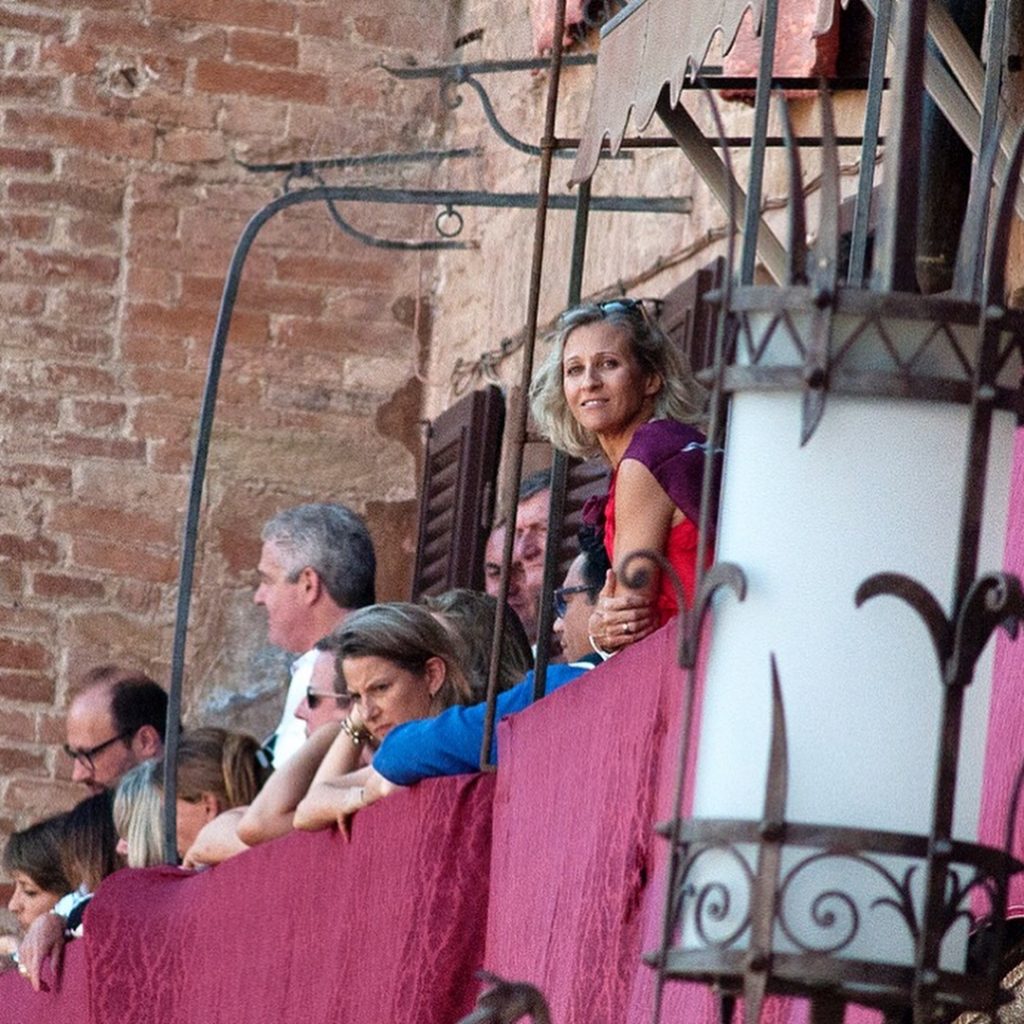
Me watching the Palio – thanks again to Luciano for this photo!
*Special thanks to Francesco Bartalini and Luciano Valentini for their invaluable collaboration on this article. Listening to two local Sienese explain the culture of ‘their’ Palio was pure poetry and I hope to have relayed some of their emotion in this article!
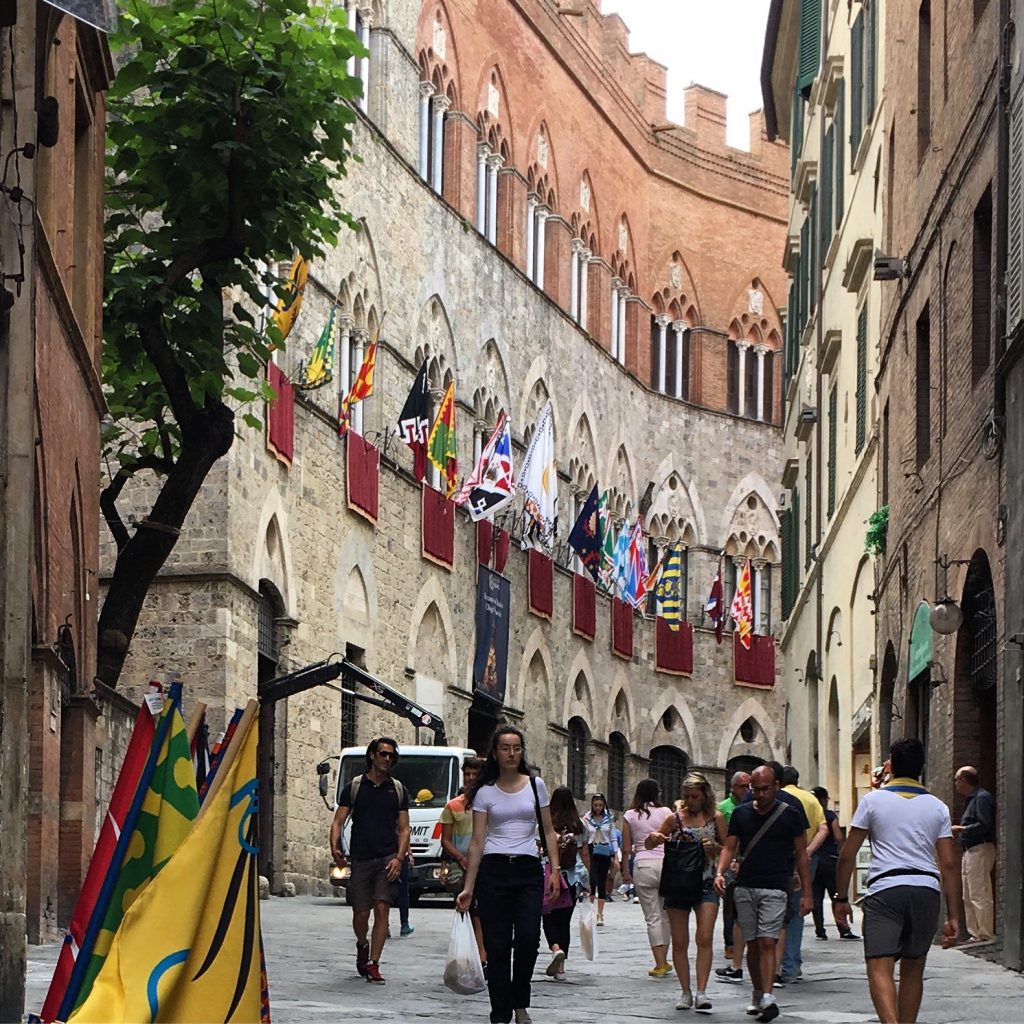
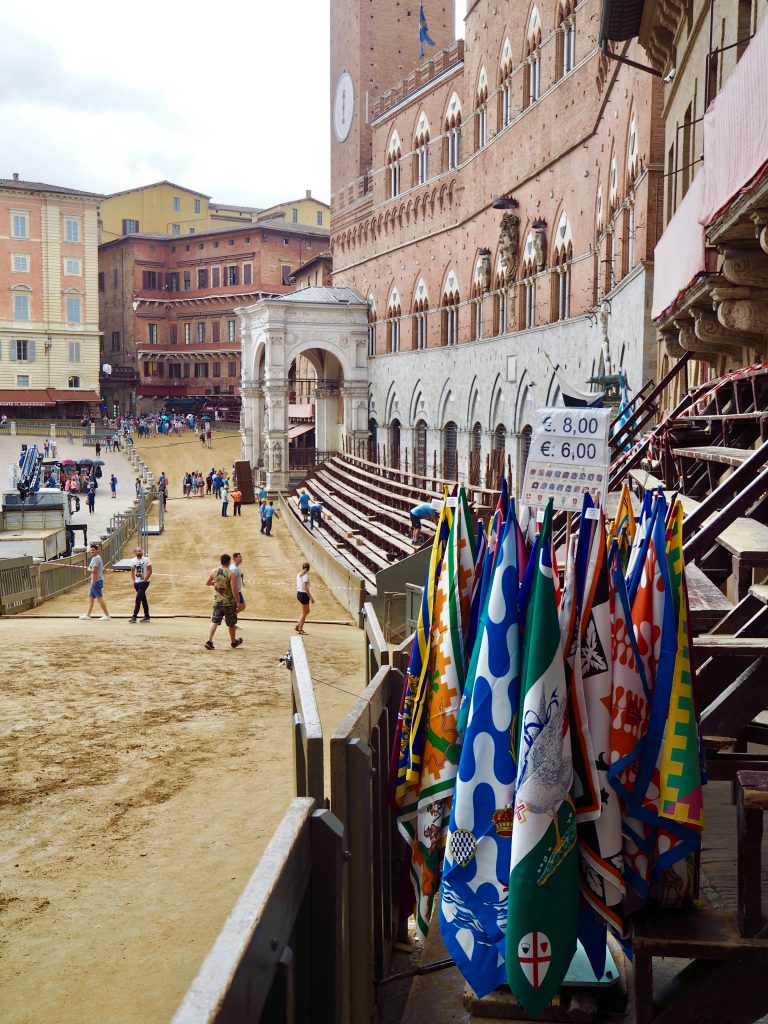
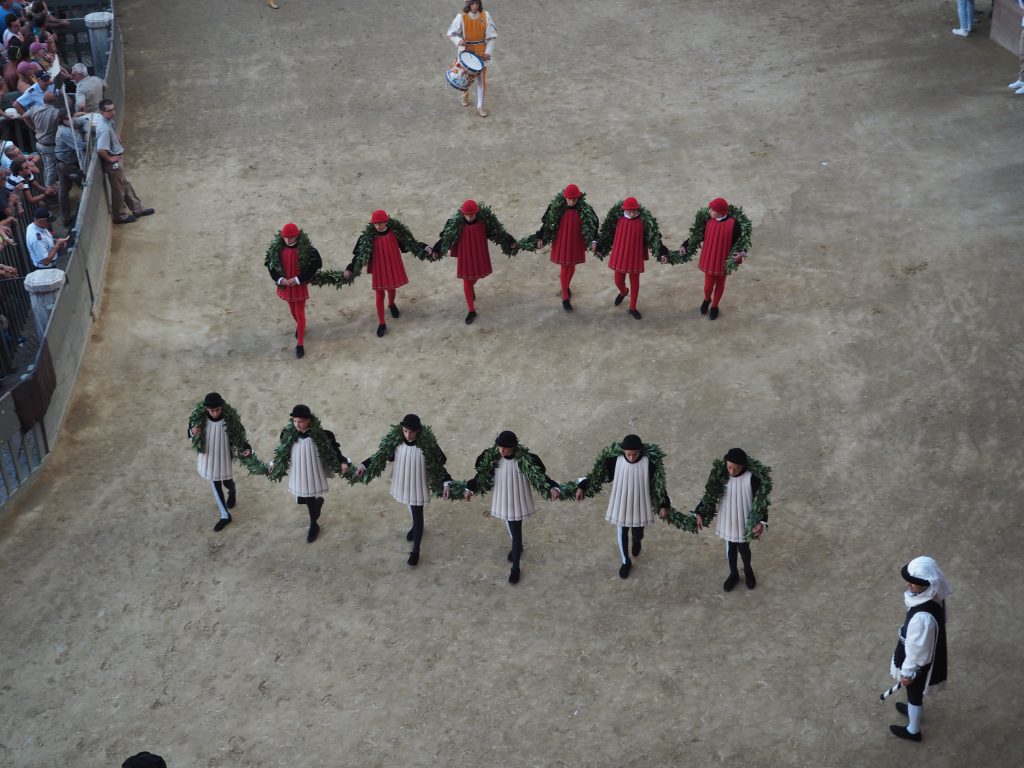
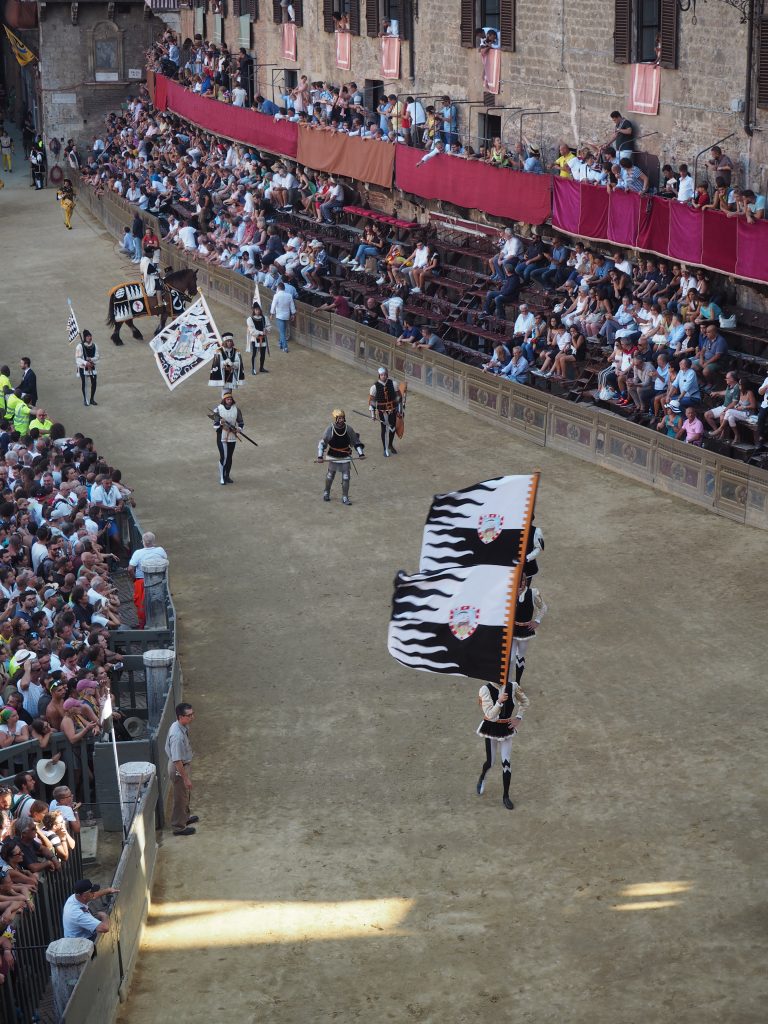
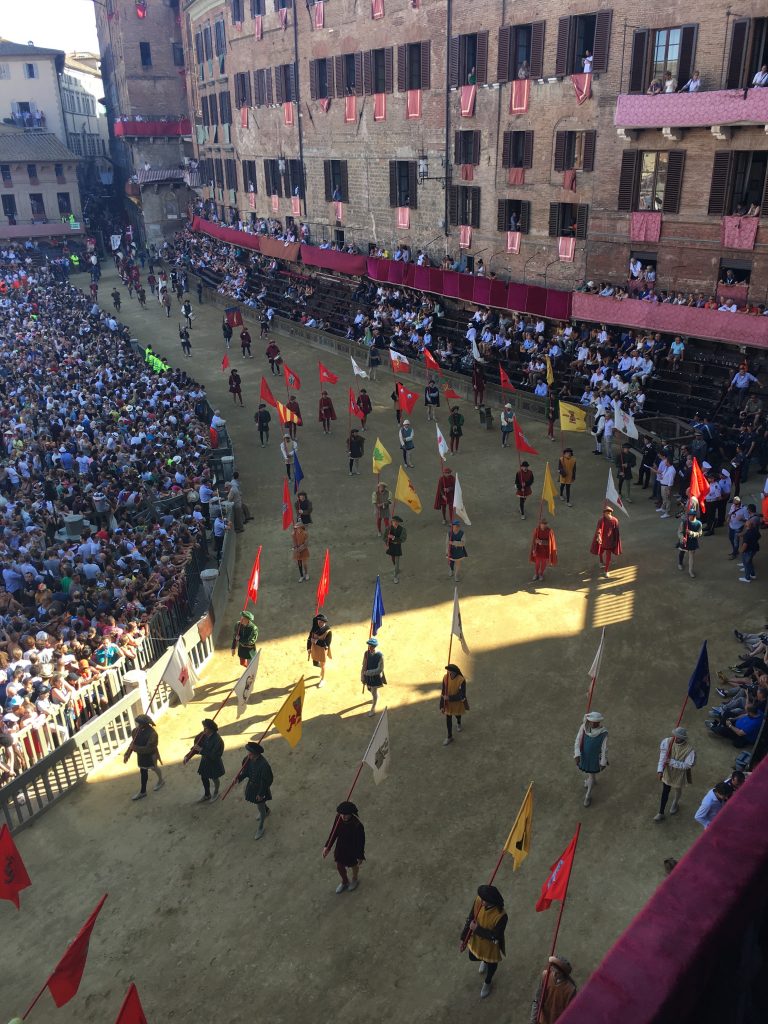
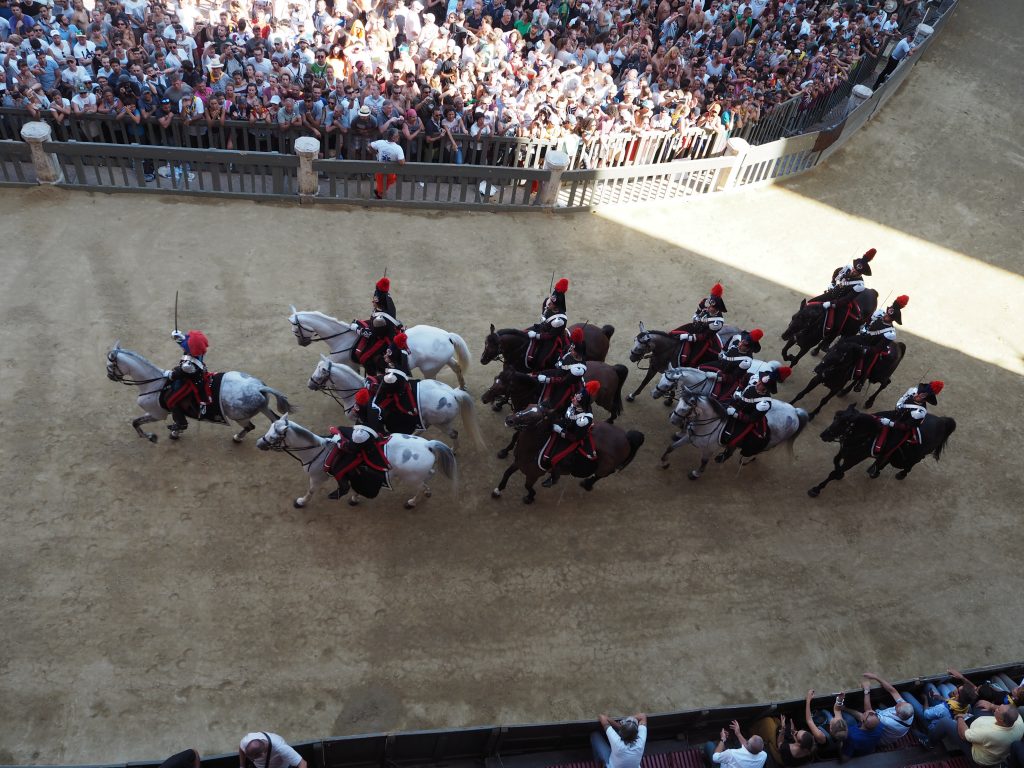
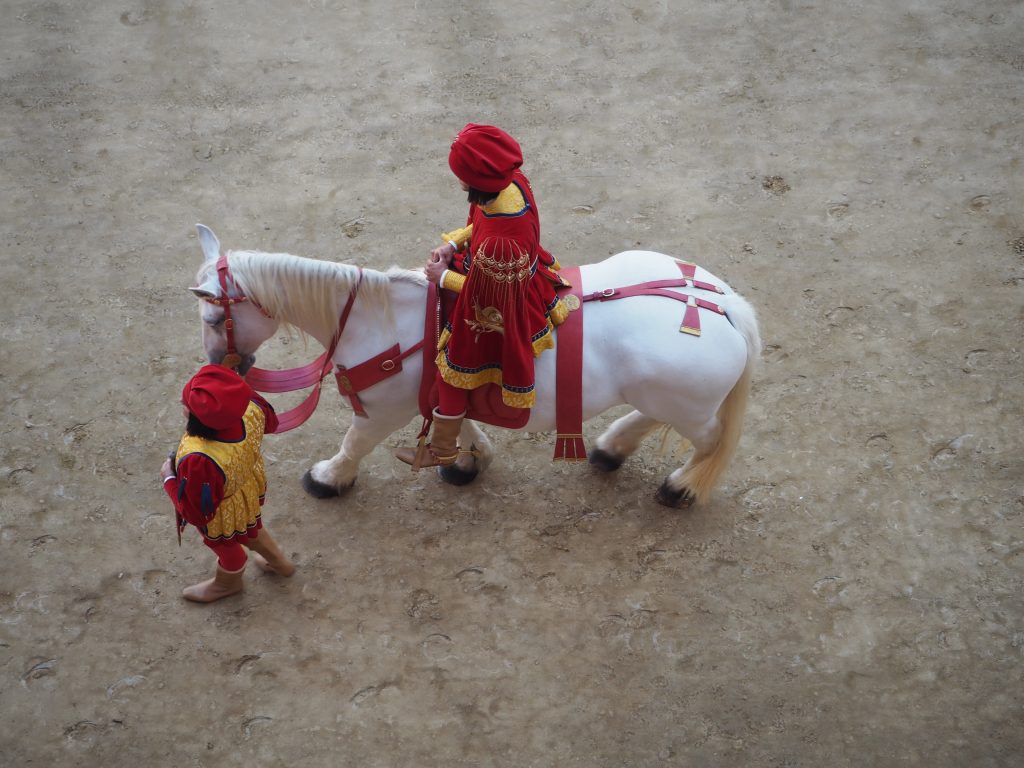
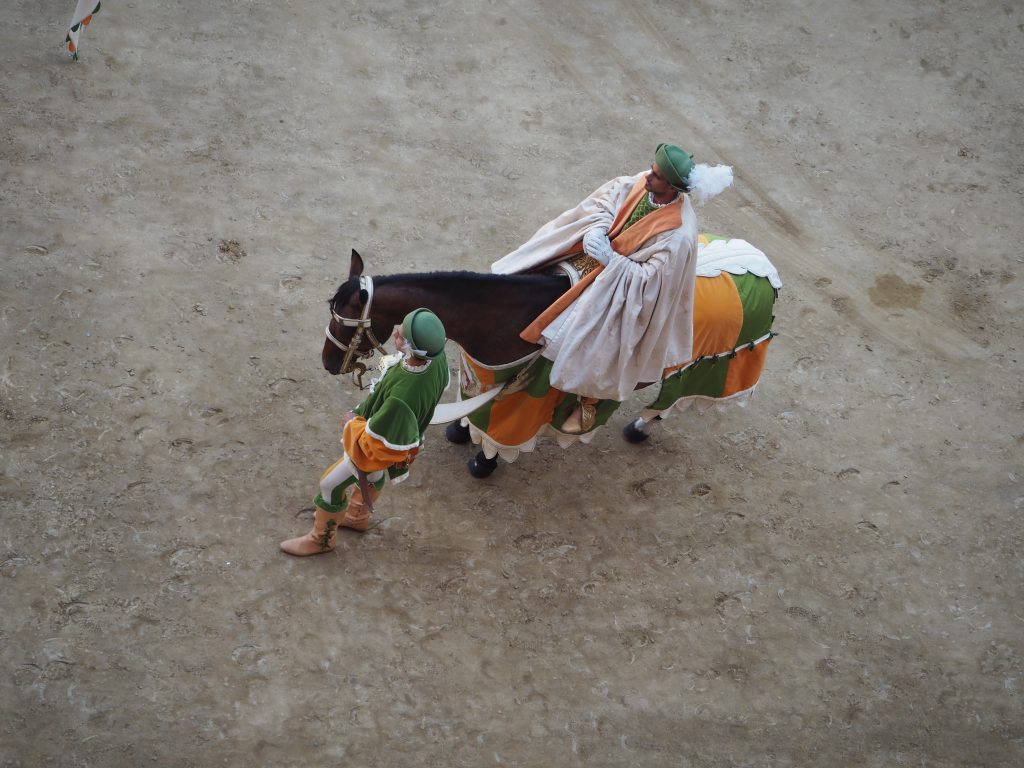
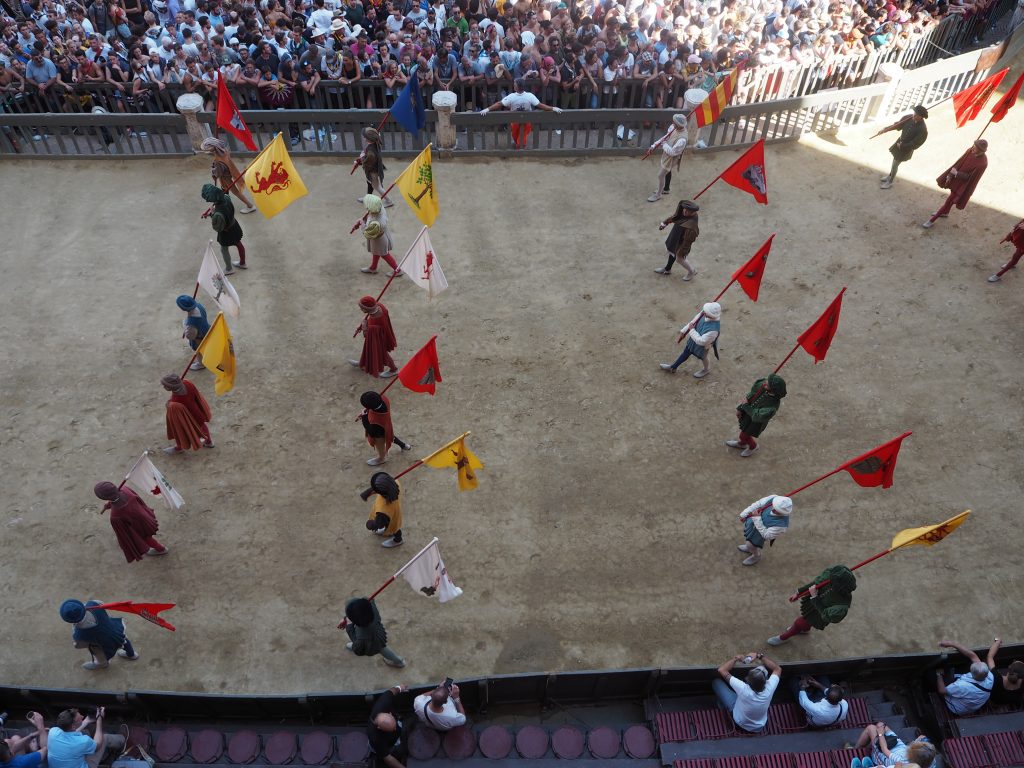
What a thrilling event this must be! Thanks for your excellent reporting and to Luciano for his pictures. I’d love to be there one day to see this!
Hi Seth,
Thanks for your comment! Words can’t really convey the atmosphere in Siena during the days of Palio – I hope you make it one day to see it in person!
Lisa
Great article Lisa (and photos Luciano) .
So it’s sort of like a combination of the Melbourne Cup, the Americas Cup and Roller Derby with more intrigue, bribery and corruption than your average Olympic games hosting selection process, then throw in some officially sanctioned in race violence.
If someone doesn’t make a Play Station game out of this I will be very surprised.
I particularly love how there are weeks and months of strictly adhered to traditions, rituals and rules and then as soon as the race starts, it’s just a matter of “I don’t care what you have to do, just beat those cornutos from the neighbouring village.”
So very Italian.
Hi Vince,
Yes, your description is quite apt! This year’s race took a long time to start as the jockeys tried to put off their rivals during the line-up. And if you think there are no rules in this traditional event, wait till you watch a game of the Calcio Storico Fiorentino! (look it up on youtube!)
Thanks for taking the time to read the article and for your very amusing comment!
Lisa
I visited this city two years ago and the tour guide explained to us about this traditional event, but not quite like you did in this article!!!! I felt like I was there during the game ! Thanks so much
Thanks so much for your very kind words Ursula! It wasn’t until I went to my first Palio that I became so passionate about the tradition. Thanks for taking the time to read my article and comment!
Have a great weekend!
Lisa